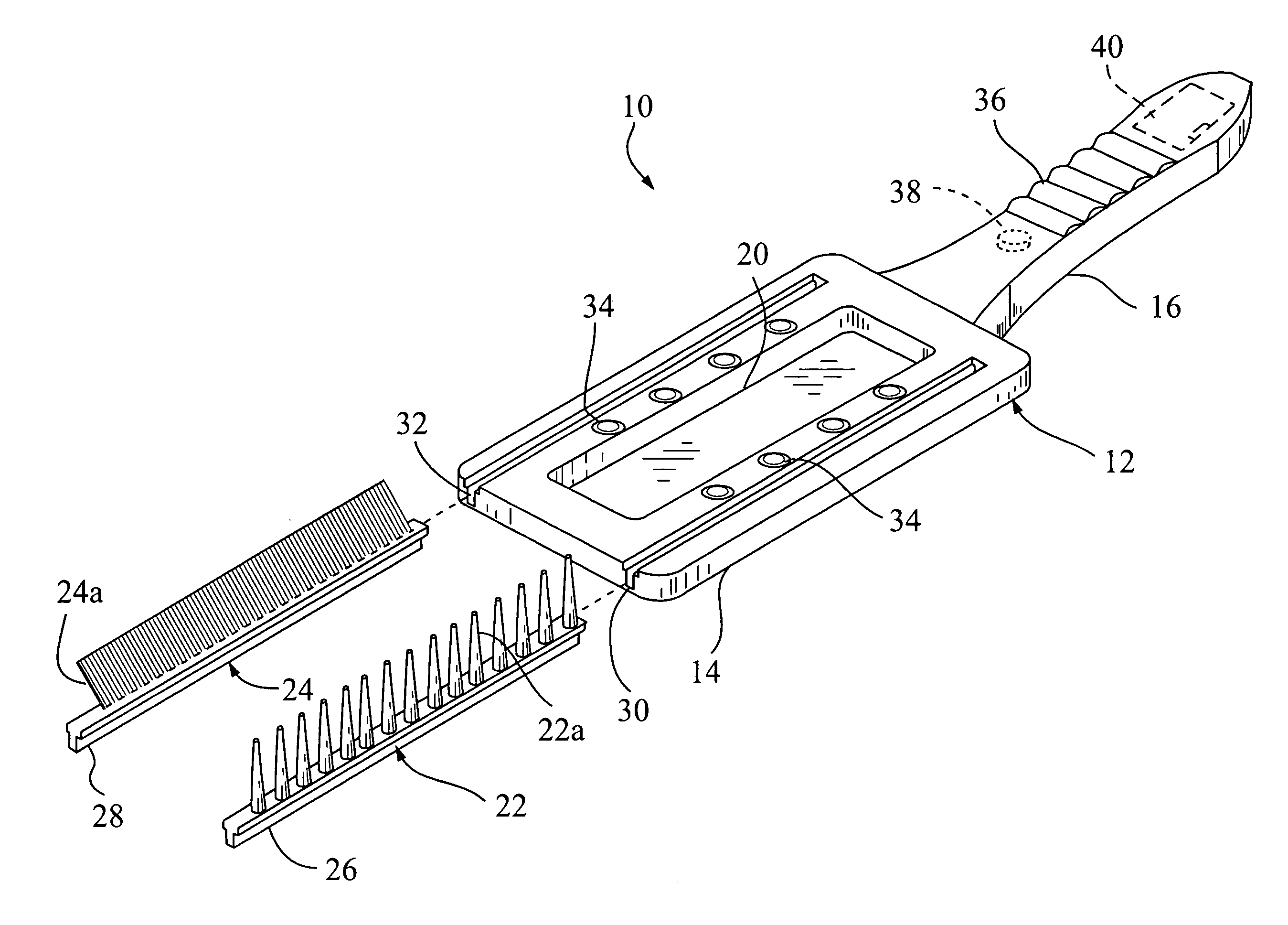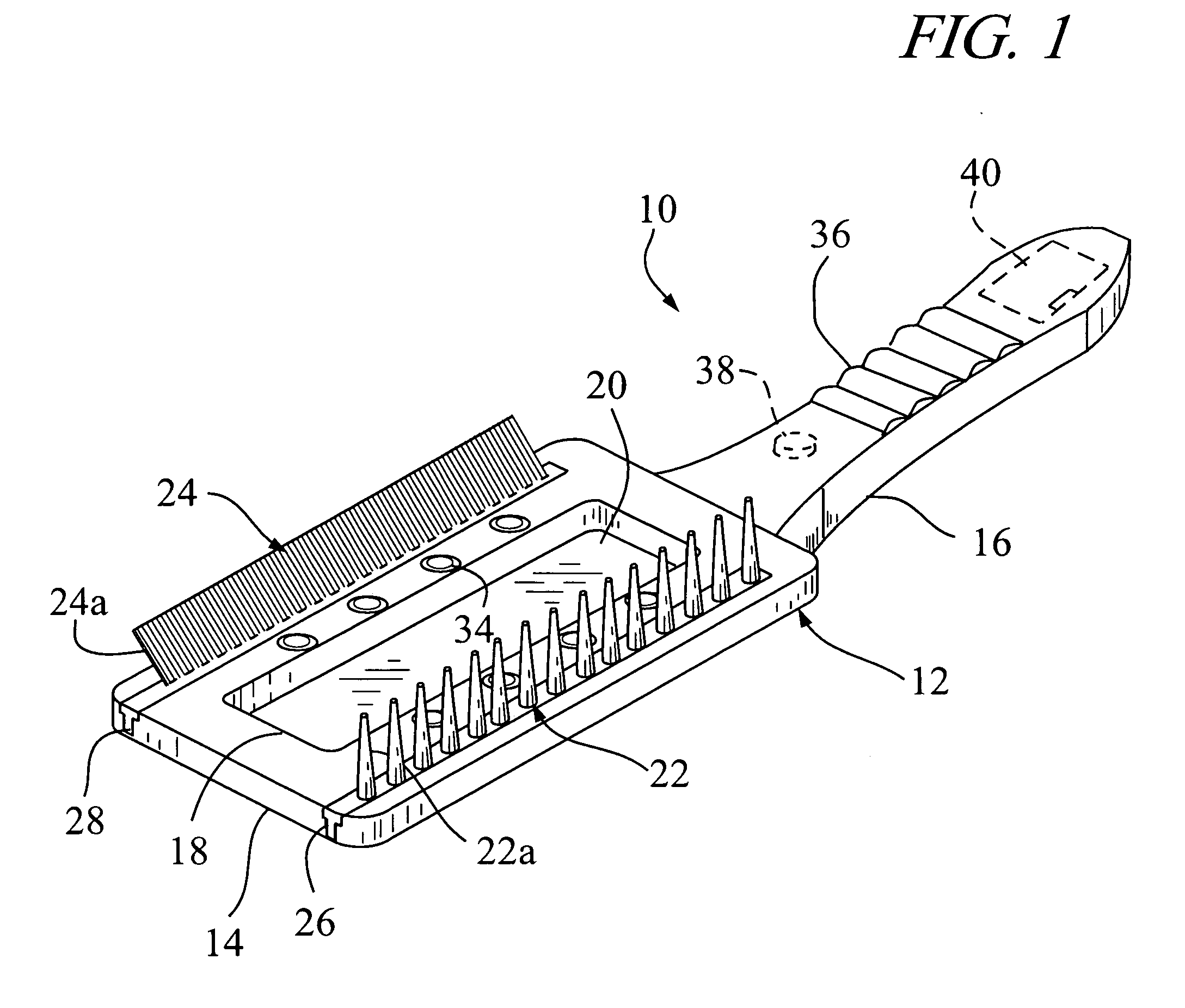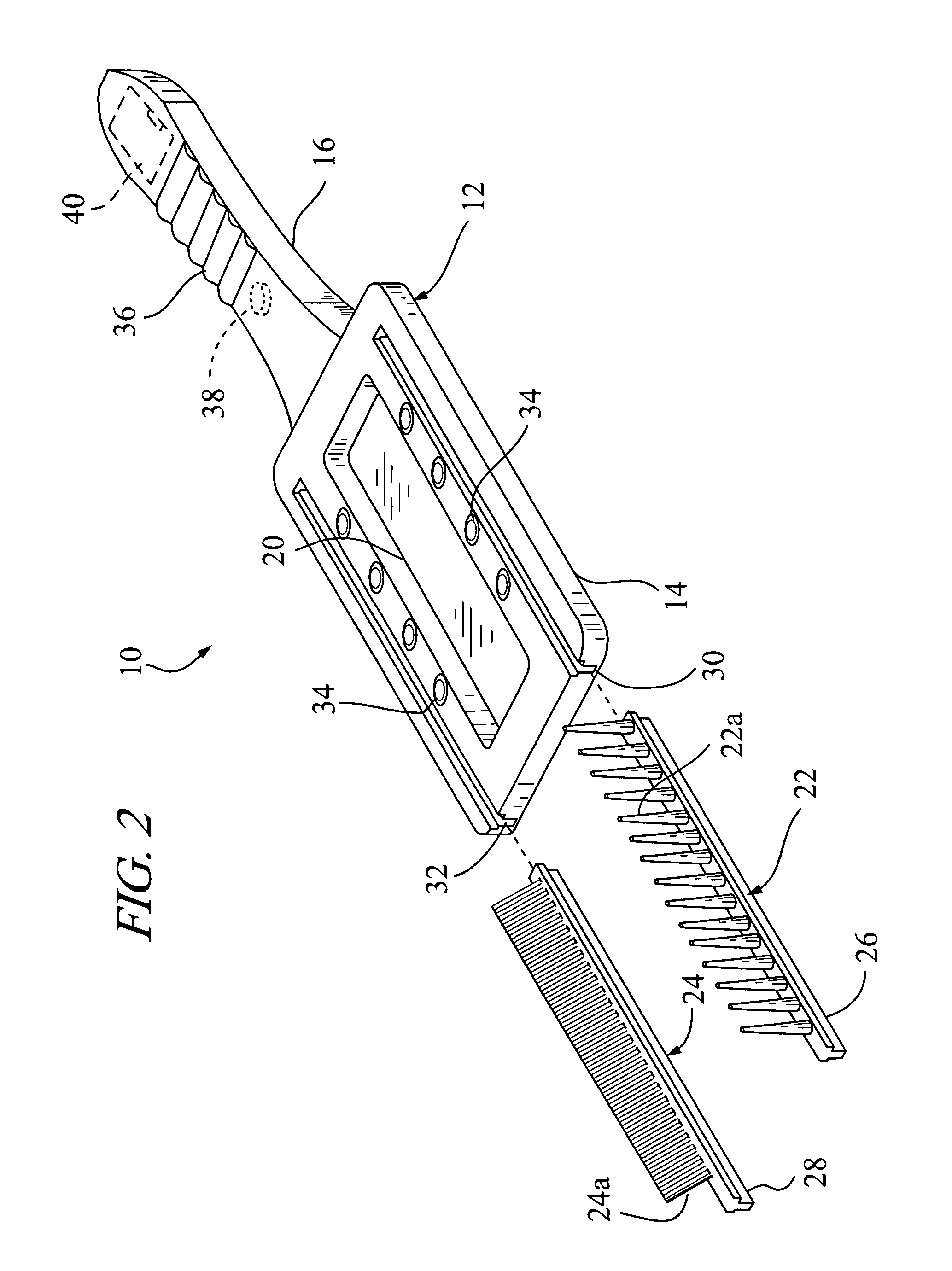Insect locator and removal tool
a technology of insect locator and removal tool, which is applied in the field of applications, can solve the problems of tapeworm infestation of the animal, high cost, and significant harm to the affected host, and achieve the effects of convenient manipulation and safe use, easy cleaning, and low cos
- Summary
- Abstract
- Description
- Claims
- Application Information
AI Technical Summary
Benefits of technology
Problems solved by technology
Method used
Image
Examples
Embodiment Construction
[0021]The following is a detailed description of a preferred and alternate embodiment of the present invention and the best presently contemplated mode of their production and practice. This description is further made for the purpose of illustrating the general principles of the invention but should not be taken in a limiting sense, the scope of the invention being best determined by reference to appended claims.
[0022]Referring to the drawings, the following is a list of structural components of the present insect locator and removal tool, generally designated 10, and those associated structural elements shown employed in connection with the present invention:[0023]10 insect locator and removal tool;[0024]12 tool body;[0025]14 tool head;[0026]16 tool handle;[0027]18 tool head opening;[0028]20 magnifying window;[0029]22 rake-like teeth set;[0030]22a rake-like teeth members;[0031]24 comb-like teeth set;[0032]24a tine members;[0033]26 base strip for rake-like teeth;[0034]28 base strip...
PUM
 Login to View More
Login to View More Abstract
Description
Claims
Application Information
 Login to View More
Login to View More - Generate Ideas
- Intellectual Property
- Life Sciences
- Materials
- Tech Scout
- Unparalleled Data Quality
- Higher Quality Content
- 60% Fewer Hallucinations
Browse by: Latest US Patents, China's latest patents, Technical Efficacy Thesaurus, Application Domain, Technology Topic, Popular Technical Reports.
© 2025 PatSnap. All rights reserved.Legal|Privacy policy|Modern Slavery Act Transparency Statement|Sitemap|About US| Contact US: help@patsnap.com



